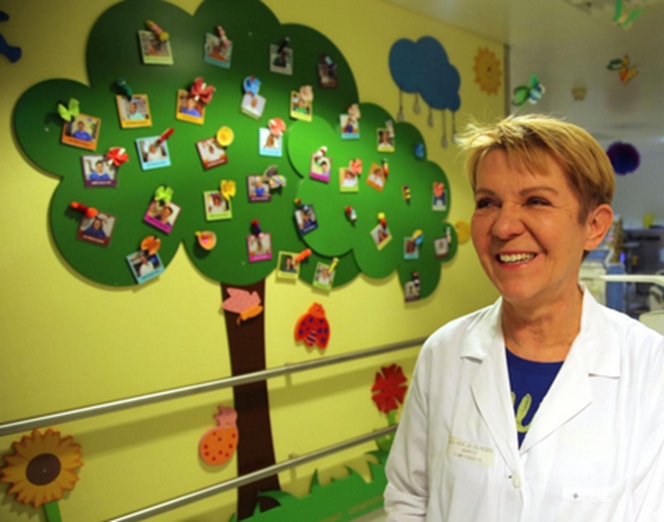Opening Ceremony - Sunday, March 20, 18:15 - 19:30 CET, Congress Hall / Virtual Hall 1
GS1-08 Keynote Lecture: allo-HCT in Paediatric Acute Lymphoblastic Leukaemia, state of art. Christina Peters (Austria)
The keynote address in today’s opening ceremony is on acute lymphoblastic leukaemia (ALL) and is this year given by Dr Christina Peters, Professor of Paediatrics based at the Stem Cell Transplantation Unit of St. Anna Children's Hospital, Vienna, Austria. “ALL is the most common childhood cancer but still a rare disease,” she explains. “There is no doubt that, for the past four decades, ALL became a curable disease for most of the pediatric patients and young adults.”
Multimodal chemotherapy – often in combination with cranial irradiation – led to steadily increasing success rates. Allogeneic stem cell transplantation (ASCT) – in the early days from HLA-identical sibling donors, and later also from volunteer unrelated and HLA-mismatched donors, became the most successful immunological treatment for patients with high risk or relapsed leukemia. In contrast to strict harmonised frontline chemotherapy protocols, transplantation was often a procedure that was influenced by experience from adult patients and local expertise.
Professor Peters will explain that, in order to reduce acute and late effects of allo HSCT in young patients, international collaboration among paediatricians enabled broad and intense discussion on new concepts on the basis of results from prospective and retrospective paediatric studies. “Since the early 2000s when it became clear that HSCT was better than chemotherapy for high risk ALL-patients, several important measures allowed comparison in multiple cohorts with harmonised procedures,” she says.
What started as a scientific discussion about whether total body irradiation can be omitted to avoid long-term side effects in patients with ALL before HSCT led to an international randomised study, eventually showing the opposite was true. After significant results pointing towards irradiation being the treatment to favour, the randomisation was stopped in 2018. Total body irradiation in combination with etoposide unmistakably turned out to be the best conditioning treatment for children with high-risk ALL in need of stem cell transplantation – because of fewer treatment related mortality and less relapses.
“We recommend this treatment for all children with high risk ALL over 4 years of age, with a sibling or suitable unrelated donor,” says Prof Peters, who is international coordinator of the study which remains open for recruitment to answer important questions on the long-term effects of total body irradiation (TBI).
However, relapse remains the most common cause of treatment failure and needs additional strategies to solve this problem. “In the new era of immunotherapy, establishing options for high-risk patients for the best available salvage therapies will further improve long-term leukaemia-free survival with fewer side effects,” Prof Peters will conclude. “This includes reduction of minimal residual disease pre-transplant, substitution of toxic chemotherapy with bispecific antibodies, replacement of HSCT by CAR T-cell therapy. Transplant strategies for specific groups –such as infants, adolescents and young adults – and innovative treatments for acute and chronic GVHD, as well as well-designed prospective studies on the value of haplo-identical donors are necessary to find safer paths to success.”

Senior Head Stem Cell Transplantation Unit, St. Anna Children's Hospital